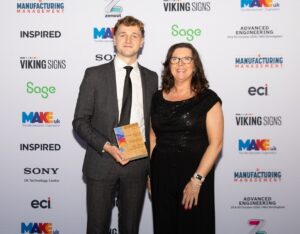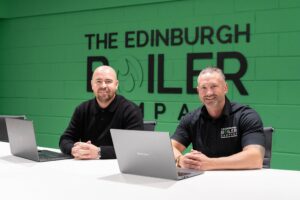SALMON COMPANY REBRANDS FOLLOWING TAKEOVER

The Scottish Salmon Company (SSC) is rebranding as Bakkafrost Scotland, three years after being bought by the Faroese group.
Scottish operations will change name, but SSC-branded products will currently remain that way.
A statement released by the company said: “The corporate focus for the past two years has been to align the businesses and develop its core capabilities in Scotland. The renaming of the Scottish operations will ensure that the group operates as ‘one company’, with two regions of production.”
Since the acquisition in 2019, Bakkafrost committed to a £711m investment programme, with the hopes of increasing group output by more than 40% with Scotland making up a significant proportion of that money and target.
The investment aimed to create new jobs, develop business performance and improve day-to-day operations for Bakkafrost Scotland’s 600 staff located across the West Coast and Hebridean Islands.
The company has opened a new Scottish headquarters at Drumsheugh Gardens in Edinburgh and expanded the hatchery at Applecross, with a recirculating aquaculture system for larger Smolt production.
However, a trading update in April noted that the Scottish harvest for the first quarter was expected to be around 4,000 tonnes, down from 7,000 tonnes during the same period in 2021, adding that SSC was seen as a “turnaround case”.
Regin Jacobsen, chief executive at Bakkafrost said: “The renaming signals that we are fully committed to Scotland and look forward to realising our investment plan that will create jobs and value in our local communities. Scotland is an integral part of our future plans for business growth.”
Ian Laister, managing director of Bakkafrost Scotland, said: “The renaming of our Scotland operations to Bakkafrost Scotland and finalising our larger smolt production strategy, represents our firm step into the future as part of the Bakkafrost family.
Bakkafrost Scotland cements our position on the global stage, while retaining our proud Scottish provenance.”
Separately, Bakkafrost has bought a Boeing 757 to get its fish from sea to plate sooner, arguing that it can cut carbon footprint by flying its own jet across the Atlantic. However, campaigners calculate that flying salmon from Scandinavia to the US produces 17 times more CO2 than boat travel.
The aircraft is being converted into a flying fridge capable of carrying 35 tonnes of chilled salmon from the Faroe Isles to an airport in New Jersey. It plans to fly other freight back to the Faroes or Scottish airports to reduce operating costs.
Jacobsen stated: “Reducing our carbon footprint to the US is a huge step and it’s very important our customers get high-quality produce. By reducing transportation times, it means consumers in New York and the East Coast have very fresh produce and reduced food waste.”
He explained that direct flights in a ready-chilled hold would cut the firm’s emissions from air freight by 45%. It currently flies salmon to the US via Heathrow, which increases the flying time and needs large amounts of ice to keep the fish cool.







